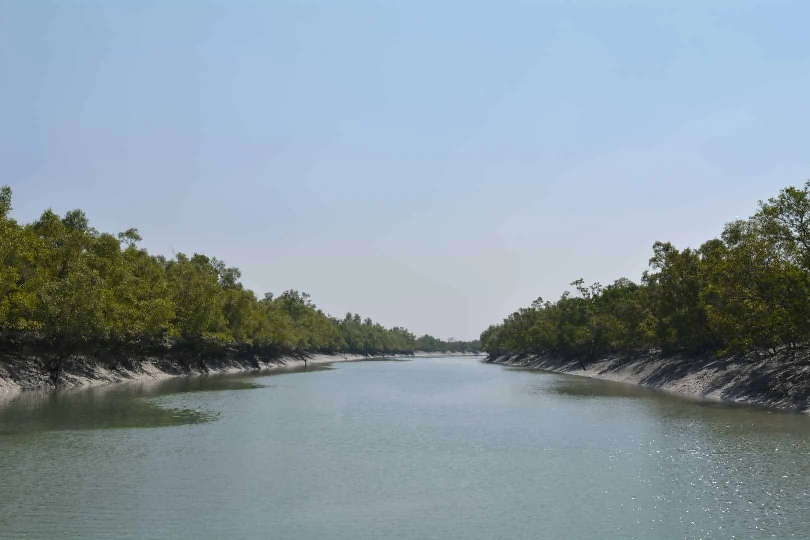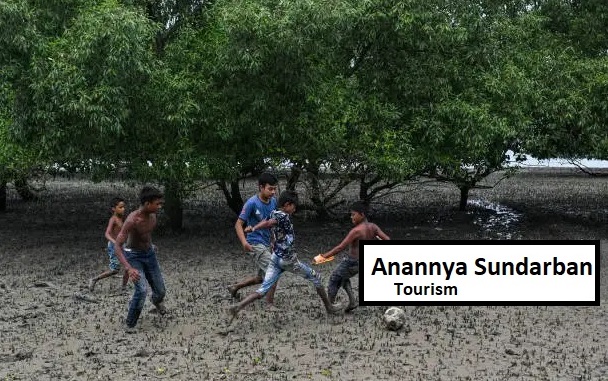Table of Contents
Dobanki Canopy Walk: A Bird’s Eye View of the Sundarban Mangroves
The Sundarbans, a UNESCO World Heritage Site, is a place of mystical beauty and raw, untamed nature. Spread across India and Bangladesh, this vast delta is the largest mangrove forest on Earth. For travelers venturing into the Indian Sundarbans in West Bengal, the experience is a tapestry of riverine journeys, dense forests, and the ever-present thrill of a Royal Bengal Tiger sighting. Among the many attractions that dot this labyrinthine ecosystem, the Dobanki Canopy Walk stands out as a truly unique and exhilarating experience. It’s not just a watchtower; it’s a walk through the treetops.
What is the Dobanki Canopy Walk?
Often referred to as the "Sundarban Hanging Bridge," the Dobanki Canopy Walk is an engineered marvel nestled in the heart of the forest. It is a suspended pathway, approximately 500 meters (half a kilometer) long, built at an height of about 20 feet from the ground. This elevation allows visitors to literally walk at the canopy level of the mangrove trees, a perspective traditionally reserved for birds and arboreal creatures.
The walkway is constructed with a strong metal mesh and wire fencing, ensuring safety while providing unobstructed views of the surrounding wilderness. As you step onto the slightly swaying bridge, the forest floor recedes, and you are enveloped by a green canopy of Sundari, Gewa, and Goran trees.
The Unforgettable Experience: A Walk in the Sky
The journey to Dobanki itself is an adventure. You arrive via a boat ride through narrow, serpentine creeks, the silence broken only by the hum of the engine and the calls of birds. The canopy walk appears like a mirage, a man-made structure in perfect harmony with nature.
As you ascend onto the bridge, the world transforms. The air is cooler, and a sense of peace descends. The walk is designed to be a slow, immersive experience.
-
A Naturalist's Paradise: From this elevated vantage point, you gain a new appreciation for the mangrove ecosystem. You can clearly see the unique pneumatophores—the breathing roots of the mangroves that stick out of the mud like thousands of straws. This bird’s-eye view is perfect for botanists and nature enthusiasts to understand the complex root structures that make this forest so special and resilient.
-
Wildlife Spotting: While spotting a tiger from here is a rare and fortunate event, the canopy walk is excellent for birdwatching. You might spot kingfishers, brahminy kites, white-bellied sea eagles, and various storks soaring at eye level. The keen-eyed might also spot monitor lizards basking on the mudflats below or troops of rhesus macaques playing in the branches nearby.
-
Informative Journey: The pathway is lined with numerous informative signboards and placards. These boards detail the flora and fauna of the Sundarbans, explain the ecological significance of mangroves, and discuss conservation efforts. It’s an open-air classroom that educates visitors about the fragile ecosystem they are walking through.
Why is Dobanki a Must-Visit in Sundarban?
-
Unique Perspective: It offers the only aerial view of the mangrove forest available to tourists in the Indian Sundarbans. This unique angle is photographic gold and provides a holistic understanding of the landscape.
-
Accessible Adventure: It is a thrilling activity that doesn't require strenuous trekking. It is accessible to people of most age groups, making it a perfect family excursion.
-
Safe Wildlife Viewing: It provides a safe and secure platform to observe the forest and its inhabitants from a comfortable distance, minimizing human impact on the environment and vice-versa.
-
The Heart of the Forest: Located deep inside the jungle, the journey to and from Dobanki increases your chances of spotting crocodiles, deer, and other wildlife along the riverbanks.
Best Time to Visit
The ideal time to experience the Dobanki Canopy Walk is during the winter months, from October to March. The weather is pleasant and sunny, making the boat ride and the walk comfortable. The clear skies also improve visibility for wildlife spotting. The summer months (April-June) can be extremely hot and humid, while the monsoon (July-September) sees most tourist activities suspended due to heavy rains and rough weather.
Essential Tips for Your Visit
-
Permits are Mandatory: Remember, you need a permit from the Forest Department to enter the Sundarban Tiger Reserve area. This is usually arranged by your tour operator.
-
Travel in a Group: Always explore the Sundarbans with a licensed guide and a group. It is for your safety and a more informative experience.
-
What to Wear: Wear comfortable clothing and shoes. Opt for earthy, muted colors like green, brown, or beige to blend with the environment and avoid startling animals.
-
Carry Essentials: Don’t forget binoculars for a closer look at birds and animals, a good camera, sunscreen, a hat, and plenty of drinking water.
-
Maintain Silence: To truly experience the magic of the forest and increase your chances of wildlife sightings, maintain silence on the canopy walk.
Conclusion
The Dobanki Canopy Walk is more than just a tourist attraction; it is a gateway to understanding the soul of the Sundarbans. It lifts you out of the boat and places you in the very heart of the mangrove ecosystem. The gentle sway of the bridge, the rustle of leaves, and the panoramic view of an endless green carpet stretching to the horizon is an experience that stays with you long after you've left. It is a powerful reminder of the beauty and fragility of our natural world and is an absolute must-do on any itinerary to the incredible Indian Sundarbans.







.gif)
.gif)

No comments yet
Be the first to share your thoughts!